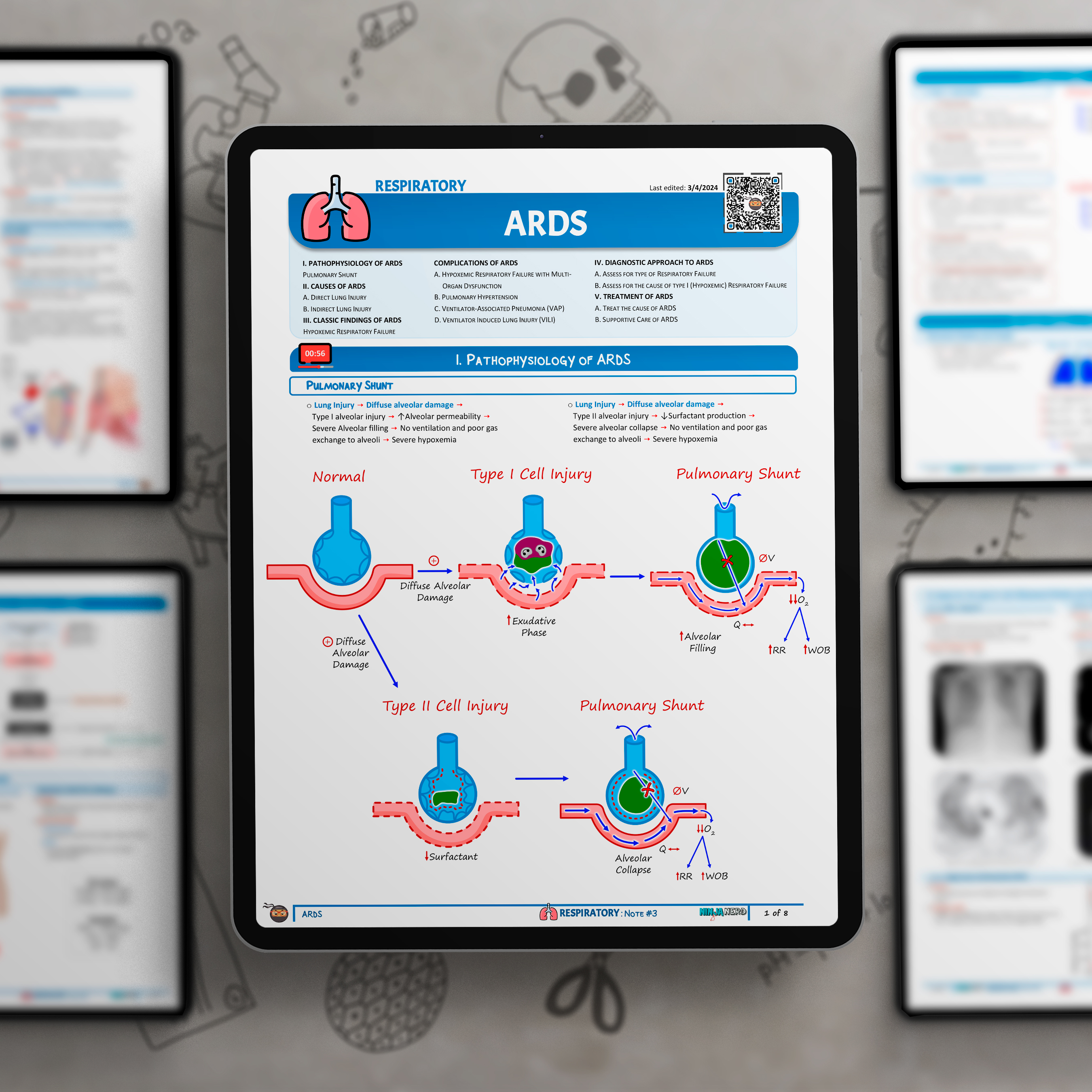Please help support Ninja Nerd to continue creating free medical videos. All donations we receive are put directly into content creation so we are able to continue providing these videos for free. Thanks!


Sorry, but there is currently no illustration available for this video.
Check back again soon, or contact us to find out when they will be available.
Ninja Nerds!
Professor Zach Murphy will present on Acute Respiratory Distress Syndrome (ARDS). We will be going into detail on the following main objectives:
1. Introduction to Acute Respiratory Distress Syndrome (ARDS)
- Gain a fundamental understanding of ARDS, including its definition and clinical significance.
- Familiarize yourself with the historical context and evolving nomenclature leading up to the current Berlin Criteria.
2. Pathophysiology of ARDS
- Understand the complex pathophysiological mechanisms that lead to ARDS, including inflammation, alveolar damage, and hypoxia.
- Discuss the risk factors and common precipitating conditions like sepsis, pneumonia, and trauma.
3. Clinical Presentation and Symptoms
- Identify the key clinical manifestations of ARDS, such as rapid onset of severe dyspnea, hypoxia, and respiratory distress.
- Understand the significance of early signs like tachypnea and decreased oxygen saturation.
4. Diagnostic Criteria and Tools
- Dive into the Berlin Criteria for diagnosing ARDS, covering aspects like timing, severity, and imaging findings.
- Learn how to interpret diagnostic tools like arterial blood gas (ABG), chest X-ray, and CT scans in the context of ARDS.
5. Management Strategies for ARDS
- Discuss evidence-based management approaches, including lung-protective ventilation, fluid management, and prone positioning.
- Explore pharmacologic options such as corticosteroids and neuromuscular blockers and when they might be indicated.
6. Monitoring and Prognostic Factors
- Understand the metrics and markers used to assess ARDS severity and guide management.
- Learn about prognostic indicators such as the APACHE II score, lung injury score, and other multi-organ dysfunction scores.
7. Complications and Long-term Outcomes
- Recognize the potential complications of ARDS like barotrauma, ventilator-associated pneumonia, and long-term pulmonary fibrosis.
- Discuss the impact of ARDS on long-term morbidity and quality of life.
Don't forget to show your support below, and become a member on our website — https://ninjanerd.org/membership
Table of Contents:
0:00 Lab
0:07 ARDS Introduction
0:33 Pathophysiology
11:28 Complications | Pulmonary Hypertension
15:21 Complications | Ventilator-Associated Pneumonia
17:15 Complications | Ventilator Induced Lung Injury (VILI)
24:55 Diagnostic Approach
28:35 Managing the Ventilator
33:04 Treatment
37:45 Comment, Like, SUBSCRIBE!